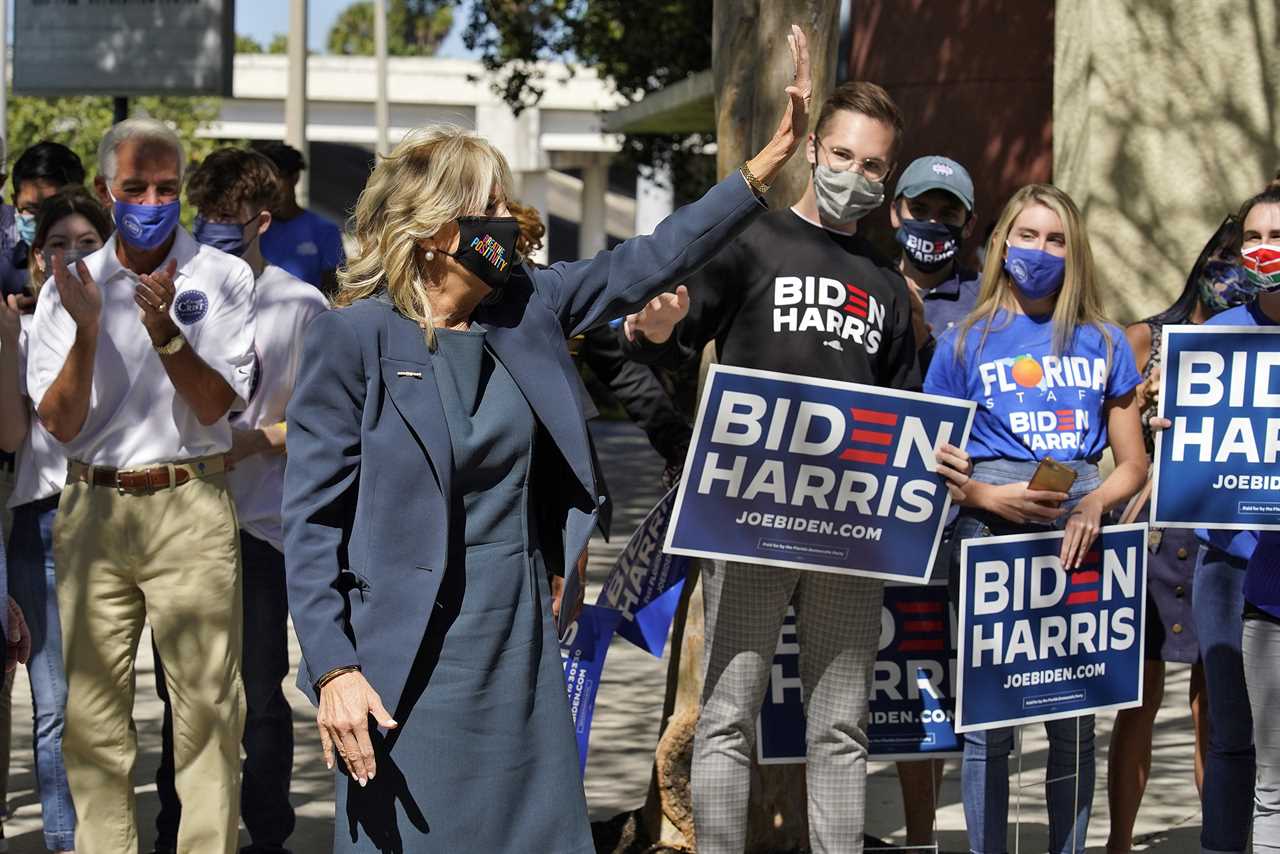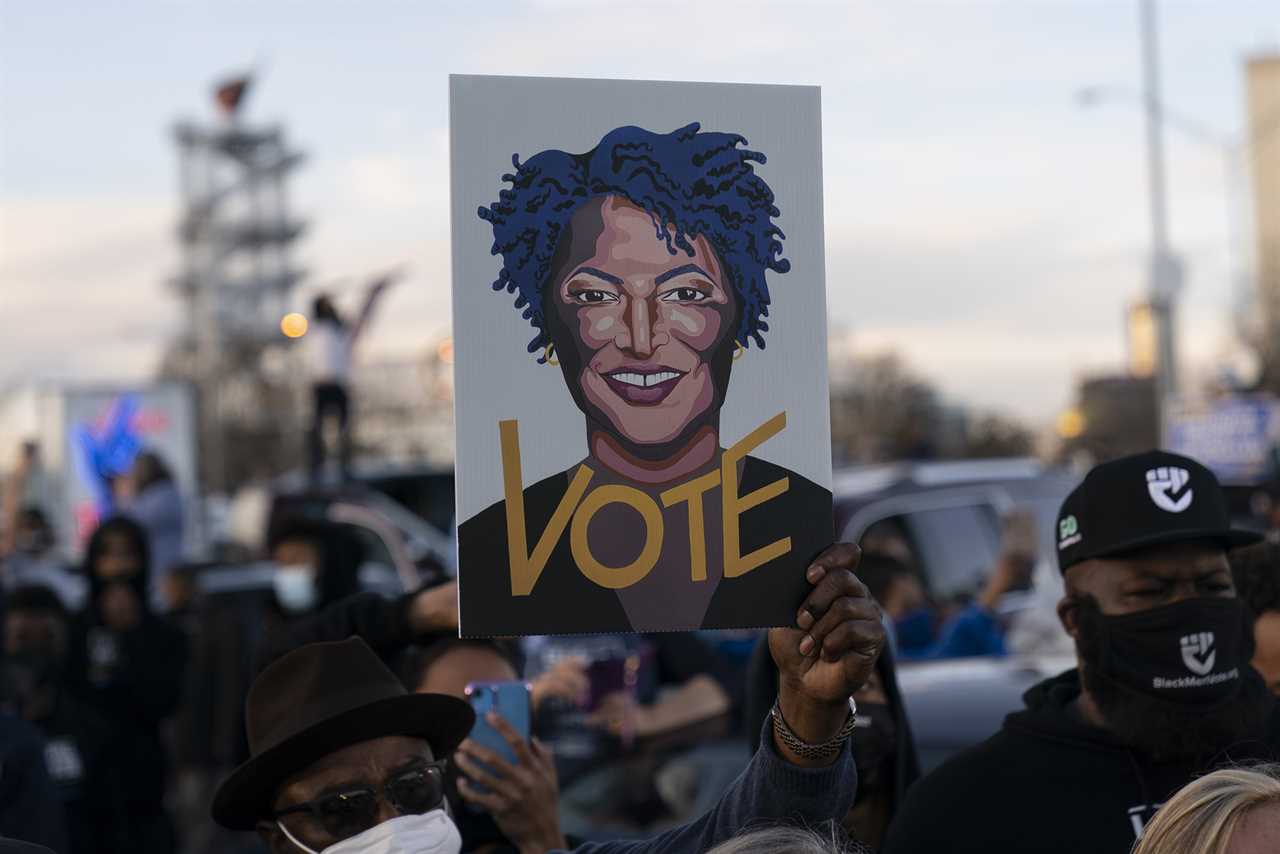
To anyone who’s spent time in Democratic politics in the past decade, a certain type of young person will immediately be familiar: bright-eyed, old enough to drive a car but not old enough to rent one without insurance fees, maybe taking a gap year before starting college or else filling a period of post-graduation, pre-employment idleness.
They probably majored, or are majoring, in political science or public policy or whatever the equivalent area of study offered by their school is. Raised on a steady diet of West Wing optimism cut with a healthy dose of Veep pessimism, they’ve likely spent a summer or two sweating it out in Washington, D.C., cranking out esoteric policy memos for a junior member’s assistant deputy legislative director, or else doing research for a grizzled senior fellow at an upper-Massachusetts Avenue think tank. They might have a faded campaign button from some bygone presidential race dangling from their Fjällräven backpack — maybe for Bernie, or more likely for Pete.
These are, of course, the foot soldiers of the Democratic Party’s permanent reserve army, members of the class of aspiring politicos who work in the party’s national and local offices, flesh out campaign staffs and populate the broader network of consultants and strategists that churns to life during major election cycles. On the campaign trail, Democratic candidates hail these young people as a major political asset, pointing to them as proof of the party’s growing base of support among the next generation of leaders and voters. On college campuses around the country, a flourishing ecosystem of student-run organizations ensures that the quad-to-campaign pipelines continue to pump out a steady flow of enthusiastic young party staffers.

But what if, hidden below their laptop stickers and campaign totes, these young people represent a real political risk for Democrats? And what if, contrary to conventional Democratic wisdom, the power that these young people wield within the party is actually hurting its chance at the ballot box rather than helping it?
In the eyes of David Shor, one of the Democratic Party’s most coveted and most controversial data gurus, that’s exactly what’s happening. In some respects, Shor understands the power that young, hyper-educated staffers wield in the world of Democratic politics because he once wielded it himself — and to great effect. In 2012, at the age of 20, Shor joined Barack Obama’s re-election campaign to develop and oversee its election forecasting system, a complex statistical modeling system that helped campaign staff decide how and when to spend money to optimize support in specific areas. In 2020, during the height of that summer’s racial justice protests, Shor was fired from the progressive data firm Civis Analytics for tweeting out an academic study suggesting that riots have historically hurt Democrats in major election years. The firing, however, has not done much to diminish Shor’s influence within the party, and he reportedly still has the ear of both Obama and senior members of the Biden administration.
This week, Shor’s theory of the electorate was subjected to a long, skeptical but sympathetic scrub by Ezra Klein, who seemed persuaded by Shor’s pessimism about the Democrats’ chances to hold the Senate, but more mixed on his prescriptions for how to fix it. Shor has another theory, though, about the Democratic Party itself — a mirror he holds up to his own side, and which might be similarly unpalatable to its insiders and even his friends.
At its most basic, Shor’s theory goes something like this: Although young people as a whole turn out to vote at a lower rate than the general population, the aforementioned type of young person is actually overrepresented within the core of the Democratic Party’s infrastructure. According to Shor, the problem with this permanent class of young staffers is that they tend to hold views that are both more liberal and more ideologically motivated than the views of the coveted median voter, and yet they yield a significant amount of influence over the party’s messaging and policy decisions. As a result, Democrats end up spending a lot of time talking about issues that matter to college-educated liberals but not to the multiracial bloc of moderate voters that the party needs to win over to secure governing majorities in Washington.
“It is descriptively true that people who work in campaigns are extremely young and much more liberal than the overall population, and also much more educated,” said Shor who at the advanced age of 30 says he feels practically geriatric in professional Democratic politics. “I think that this is pushing them to use overly ideological language, to not show enough messaging or policy restraint and, from a symbolic perspective, to use words that regular voters literally don’t understand — and I think that that’s a real problem.”
People who paid close attention to the 2016 presidential campaign probably remember the most-watched Democratic campaign commercial from the cycle, Hillary Clinton’s “Mirrors” ad, which featured images of young women gazing at themselves in mirrors intercut with footage of Donald Trump making disparaging comments about women. It was powerful stuff — at least among the young liberals on Clinton’s staff.
The “Mirrors” ad featured prominently in a series of experiments that Shor did with Civis to evaluate the effect of various Democratic campaign commercials on voters’ decisions. The findings of the experiments were not encouraging. For one, they found that a full 20 percent of the ads — including “Mirrors” — made viewers more likely to vote for Republicans than people who hadn’t seen the same ads. And after his team started polling members of Civis’s staff, they made an even more troubling discovery. On average, the more that the Civis staff liked an ad, the worse it did with the general public.
“The reason is that my staff and me, we’re super f---ing different than than the median voter,” said Shor. “We’re a solid 30 years younger.”
The notion that highly-educated young liberals might not be the best mouthpiece for the Democratic Party’s message received more traction following the 2020 election, in which Democrats made significant gains among young voters but continued to lose ground with other key Democratic constituencies, including voters without a college degree and some Black and Latino voters. The question of how Democrats should engage with young people has taken a new urgency in recent weeks, as the party takes stock of the political implication of the 2020 census data, which painted a picture of an America that is younger, more diverse and more city-centered than ever before.
And while Shor is the most prominent proponent of the theory that young liberals wield too much power within the Democratic Party, he is hardly the first one to propose it. In 2015, the political scientists Ryan Enos and Eitan Hirsh published a paper in the American Political Science Review analyzing the results of a survey they conducted among staffers on Obama’s 2012 re-election campaign. Based on the results of their survey, Enos and Hirsh concluded that “in the context of the campaign widely considered most adept at direct contact, individuals who were interacting with swing voters on the campaign’s behalf were demographically unrepresentative, ideologically extreme, cared about atypical issues, and misunderstood the voters’ priorities.”
In layman’s terms, the people the Obama campaign had hired to win over swing voters were seismically out of touch with the people they were meant to persuade — and as a result, their engagement with those voters may have hurt Obama’s chances more than it helped them.
To be clear, Shor does not put his theory forward as a monocausal explanation of Democrats’ missteps in 2020. But he does think that with just over a year until the 2022 midterm elections, Democrats have not fully reckoned with the political dangers of allowing their party to be powered predominantly by 20- to 30-year-old college graduates. In particular, he’s concerned that the post-election debate surrounding Democrats’ embrace of the controversial “Defund the Police” slogan — a major flashpoint in the party’s postmortem analysis — has obscured other, more enduring areas of ideological divergence between young party staffers and key Democratic voters.
In reality, Shor says, young party staffers are far to the left of the median Democratic voters on relatively uncontroversial, bread-and-butter Democratic priorities like combatting income inequality or addressing climate change. In their 2015 paper, for instance, Enos and Hirsch found that 23 percent of Obama staffers cited income inequality as the single most important issue facing the country, whereas polls from that election cycle found that fewer than one percent of all voters listed “the gap between rich and poor” as the most important issue. Enos and Hirsch also found that campaign workers were more likely to cite health care and inequality as an important issue to voters — even though most voters did not list those as high-priority issues and said they were more concerned about things like war and inflation.
Shor knows that this theory can sound a bit conspiratorial — as if he’s asserting that a militant vanguard of Millennials and Gen-Zers have hijacked the Democratic Party for their own narrow purposes — but he is careful to specify that the reality is neither so sinister nor so complex. In fact, the mechanism that allows the views of young party staffers to exert a disproportionately strong influence over public perception of the Democratic Party is pretty straightforward.
“To oversimplify things a bit, swing voters get their news from mainstream news sources, and mainstream news sources basically report on what political professionals and campaigns tell them. And so this means that the public-facing communication choices and policy choices of people who work in Democratic politics and on Democratic campaigns — and, to be clear, of liberal-leaning journalists who go and write about these things — is all mechanically the thing that drives public opinion,” Shor said. “I think that’s, like, a bit of a radical statement, but I think it’s true, and I think the political science bears it out.”

Shor concedes that some version of this class of highly-educated neophytes has been a permanent feature of Democratic Party politics since at least the 1960s, but he argues that the downstream political effects of this demographic imbalance have gotten worse as the rise in education polarization — i.e. the tendency of highly educated voters to lean Democratic and less-educated voters to lean Republican—has exacerbated the ideological divide between Democratic staffers and the median voter.
“It’s always been true that this group was higher socioeconomic status and younger and all these other things, but the extent to which those biases mattered has changed a lot in the past ten years,” said Shor.
The way to compensate for these biases, Shor says, is twofold. The first is for Democratic candidates and their staff members to engage in more rigorous messaging discipline — in short, to “talk about popular things that people care about using simple language,” as Shor has defined his preferred brand of messaging restraint before. This approach would not preclude Democrats from talking about progressive-coded policy ideas that enjoy broad popular support, such as adopting a wealth tax on high earning individuals or mandating that workers receive representation on corporate boards.
In the longer term, however, the party will have to elevate the policy and messaging preferences of its moderate Black, Hispanic and working-class supporters over the preferences of young, highly-educated and liberal staffers.
“We are really lucky that we have a bunch of relatively moderate, economically progressive people in the Democratic Party who have close to median views on social issues and religiosity and all this other stuff, and the only thing is, most of them aren’t white,” Shor said. “Someone derisively told me that what I was saying is that we should be booking Maxine Waters instead of random [Black Lives Matter] activists, and I think that’s right. I think we should probably care what [Congressional Black Caucus] members think about things.”
Of course, Shor’s theory might be entirely off the mark — and many on the left think it is.
“It’s both mixed up and wrong,” said Steve Phillips, founder of the political strategy group Democracy in Color and senior fellow at the Center for American Progress.
Ironically enough, critics like Phillips agree with Shor’s premise that the demographic composition of the Democratic Party’s staff does not reflect the demographic make-up of its key voters, but they maintain that the primary problem is that these staffers are too white, not that the staff is too young or too liberal. From this modified premise, they draw the exact opposite conclusion about the party’s message: that Democrats need to double down on a bolder vision of progressive change rather than retreat toward the center.
“It is true that the leadership as well as too much of the staff of the Democratic Party — and in particular in the progressive ecosystem — is largely white … [and] the problem with having the political leadership of the progressive part of the Democratic Party be disproportionately white is that you don’t have people who have cultural competence [in communities of color], you don’t have people who are fighters, and so the approach is to compromise, soften, avoid and tiptoe at a time when we’re in a pitched battle,” said Phillips.
In many respects, the disagreement between Shor and Phillips follows the same fault lines that emerged among Democratic officeholders in the immediate aftermath of the 2020 election. In Phillips’ analysis, for instance, the party underperformed in 2020 because Democrats failed to turn out their progressive base, not because progressives’ support for activist social positions alienated swing voters. Shor, a long-time partisan in the persuasion-versus-turnout debate, says the theory that the outcome of the 2020 election was the result of differences in voter turnout rather than changes in vote-switching is “the closest thing to flat earther-ism in politics.”
“That’s just, like, an empirical question,” he says, citing data that suggest that vote switching has historically played a much more significant role than changes in turnout in determining the outcome of elections.
But the question of whether Democrats should embrace the bold, progressive vision championed by young party activists is decidedly not an empirical question — even though Shor’s and Phillip’s positions hinge on their interpretation of a handful of data points about the demographic composition and ideological leanings of the electorate.
The first point of disagreement relates to whether non-voters in general — and young, non-voting people of color in particular — support a bold message of progressive change or a moderate message grounded in populist policy positions. Shor and Phillips point to different data sets to substantiate their arguments. Shor, for instance, cites original polling that suggests that only one in four non-voters identifies as liberal, while three out of four identifies as either moderate or conservative. Shor’s findings are corroborated by the results of a 2020 study from the Knight Foundation, which found that only 20 percent of non-voters identify as staunchly liberal, while closer to 60 percent fall in the middle of the ideological spectrum. “It turns out that, you know, that non-voters actually do not have particularly strong ideological leanings, because if they did, they would vote,” Shor said.
Meanwhile, Phillips, who is Black, argues that Shor fundamentally misunderstands the ideological preferences of moderates and conservative people of color. To back up his claim, he points to a recent Gallup poll that found high levels of support among Black and Hispanic people for progressive-coded proposals to scale back funding for police departments. “If you’ve spent time in a Black barbershop or a hair salon, you can understand some of the complexity and potential contradictions around different Black folks’ view,” said Phillips.
The second set of disagreements has to do with whether increased turnout among younger multiracial voters could materially change the outcome of national elections. Shor says that Democrats’ expectation that long-term demographic shifts would give the party a semi-permanent majority has fallen flat, and the rural bias of the Senate and the Electoral College will soon make it practically impossible for Democrats to win a governing majority without winning back at least some rural swing voters in key purple states.

Phillips thinks that Shor’s naysaying is premature, and argues that if Democrats can take advantage of the demographic shifts that are already underway in the South and Southwest, they can overcome the institutional biases of the Senate and Electoral College to win durable majorities. As a proof of concept, he points to the recent successes of former Georgia gubernatorial candidate Stacey Abrams, who in 2020 helped leverage a coalition of first-time voters and low-propensity voters of color to flip Georgia blue.
“I don’t understand why every Democratic consultant or leader or any member of the party who has any kind of influence is not simply sitting in a folding chair outside of Stacey Abrams’s house, asking her every single day what we should do,” said Phillips.
Ultimately, these internecine fights over demographic data obscure a more basic point of consensus on the left: that the highly-educated young liberals who serve as the standard-bearers of the party’s platform are leading Democrats down a path toward political obscurity. Unfortunately for Democrats, this cadre of young people isn’t likely to disappear anytime soon.
“The reality is that highly educated people run almost every institution in the world, and that is like a very difficult thing to swim against,” as Shor put it. “A lot of what I’m saying is that people like me have too much power and too much influence.”
On that point, at least, Shor and Phillips can agree.
----------------------------------------
By: Ian Ward
Title: The Democrats’ Privileged College-Kid Problem
Sourced From: www.politico.com/news/magazine/2021/10/09/david-shor-democrats-privileged-college-kid-problem-514992
Published Date: Sat, 09 Oct 2021 06:00:34 EST






